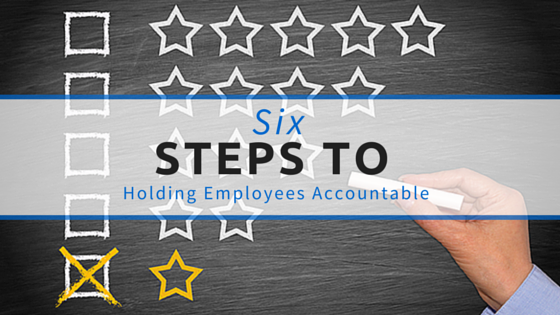Ineffective communication is the root of all evil.
Recent research has shown that the average employee in a professional services firm wastes 40-minutes per day due to ineffective communication alone. In the average company with an average payroll this equates to approximately $5,220 per employee per year in lost productivity.
And, that is just wasted time due to ineffective communication.
If you add low trust, low morale work environments with low levels of employee engagement, and the lack of consistent communication around managing job performance and behaviors, that $5220 per employee per year in lost productivity and under-performance goes up three-fold.
There are a myriad of places that ineffective communication can be found – within teams, between employees and their supervisors, with vendors, subcontractors and clients, and between departments. Because there are virtually unlimited ways communication leads to low productivity and performance, companies struggle with getting a finger on exactly what to do and where to start.
Many professional services firms struggle with holding employees accountable. This issue is often grounded in deep cultural foundations over many years. This problem not only affects financial performance results, it often undermines the morale and productivity of top performers who resent getting treated the same as the least effective employees.
While facilitating a recent seminar on workplace communication, three of the 10 business CEOs I was working with admitted one of their biggest issues in their workplace revolved around performance management and providing employees proper and effective feedback. They struggled with holding employees accountable and the conversations around poor performance. Some even admitted having poor employees on their teams that were holding the company back causing issues with project quality and delivery.
When questioned further, we discovered the real issue was that they often didn’t feel comfortable providing feedback to employees about job performance because they were not confident they provided clear and definitive performance expectations for the employees’ role to begin with.
Because of this, they procrastinated on offering the feedback, and accepted and tolerated, the poor performance.
They were caught in the Poor Performance Perpetuation Spiral.
Many business leaders fall into the trap of being too vague and lacking specificity, when communicating performance expectations at the beginning of an employee’s working relationship, and on each project.
This leads, as it did with my seminar participants, to procrastination in addressing performance and behavior issues in a direct, candid manner. Even worse, when it is finally addressed, it is often done in a vague manner, reinforcing the lack of specificity around performance and behavior expectations, causing the Poor Performance Perpetuation Spiral to pick up speed.
To break this cycle here are six simple steps:
- Apply The Clean Slate Strategy – This is where the small business leader admits they got off on the wrong foot and apologizes to the employee. Then, both agree that the employment relationship gets a “do over” and starts from the beginning with new performance and behaviors expectations.
- Identify Clear Performance Expectations – Identify the specific, measurable results that the individual employee should be contributing from their role. This should be in the form of quantifiable goals that can be measured as well as observable behavior expectations that can be witnessed and experienced by those in the environment.
- Have Regular Conversations – For new employees this should be weekly for the first 90-days to reinforce the performance and behavior components that are fulfilling the expectations and to quickly identify those that need adjustment, and bi-weekly thereafter (never less than monthly).
- Capture & Log Performance – Each person keeps notes about the conversations to use when the semi-annual or annual performance appraisal time comes, so there is a record of the conversations and the appraisal becomes simply a review.
- Provide “Feedforward” –Focus on the desirable behaviors that need to manifest moving forward. This provides a vision for performance and behaviors as they need to be and gives a framework for future expectations.
- Focus on Helping – A leader’s primary role is to provide the resources and support for his or her people to be most effective. The employee should also be made to feel comfortable giving feedback/feedforward to their boss. Encourage it and show you expect it each time by asking the question.
Don’t have time for all that you say? Following these six steps will simply replace all the time you are spending putting out fires and trying to prod your employees to perform and behave as you need.
How is your performance management process affecting your results?
JOIN THE RAISE YOUR VALUE AUDIOBOOK LAUNCH TEAM
Help us get the audiobook off the ground and you'll receive the following benefits:
- Be among the first to hear the audiobook and give feedback
- Invitation for you and your leadership team to attend an exclusive web training to learn and discuss how to implement the 5-Step RAISE Your Value Formula in your firm
- Up to 20% discount on the RAISE Your Value online workshops for 12 months
- Corporate discounts on bulk orders of books
- Exclusive invitation to join us for our RAISE Your Value Audiobook Virtual Launch Party!
- Invitations to participate in other live and virtual events, workshops, book signings and other educational opportunities
More From the Find the Lost Dollars Blog...
5 TOP BUSINESS CHALLENGES A&E FIRMS FACE IN 2024
The business environment for A&E firm is changing due to growing competition, fee pressure, technology advances and hybrid work arrangements. Most A&E firms struggle to adapt to the fast pace of change. In working with A&E firms of every size and...
Increase Revenue with no Extra Work in 12 Months: The RAISE Your Value Fee Accelerator Program
We are excited to announce the launch of our new program – the RAISE Your Value $1M Fee Accelerator kicking off in January. This blog post will provide information about the program, the results you can expect to achieve and how you can be one of a small group of...
Strategic Advantage: Harnessing the VQ Assessment for A&E Excellence
In today's competitive landscape, architecture and engineering (A&E) firms face numerous challenges when it comes to differentiating themselves, maintaining profitability, and cultivating a company culture that truly embodies their values. In my newest book, RAISE...





